Introduction

All motorcycle enthusiasts, as we know, have a selection of machines as part of their ultimate dream garage. This would typically include a litre-class superbike, a low-slung cruiser, a small capacity two-stroke racer and something with panniers that can be taken off-road and ridden two-up all day long. Unfortunately, having this sort of a line-up under one roof is beyond the reach of most enthusiasts, including myself.
Although fortunately enough for us, Bajaj took this as a dilemma and introduced the multipurpose Pulsar 220 DTS-Fi back in 2007. The fuel-injected Pulsar 220 was a good, yet flawed motorcycle, however, few would argue over its prominence and contribution towards spearheading performance motorcycling in India.
You have got to hand it to Bajaj. What started out as an aspiration for such a large chunk of motorcyclists has now evolved into a range of models (Read: 220F, 200NS and RS200) catering to different spheres of motorcycling, with the latest entrant being the Pulsar AS200 or Adventure Sport, as Bajaj likes to label it.
We recently sampled the AS200’s adventure-touring quotient in Lavasa. And while the windy, smooth tarmac of the hill city isn’t quite the ideal testing ground, it showed how this new breed of the Pulsar range behaves on the road.
Looks and styling

If there is one area where Bajaj’s design team excels at, it’s blending their existing products with a design suited to a whole different class of motorcycles. Take the Discover 150F, for instance, which comes with a faring that is neatly integrated into the overall design. And like the Discover, the NS-derived AS200 also looks a whole lot different from its erstwhile siblings, when viewed head-on.
The AS200 is easy on the eyes. While its design may not be as highly appealing as some of the semi faired or fully faired motorcycles of the same class, there is a lot to like - the well-integrated fairing, the large windscreen and the 10-spoke alloy wheels are our favourite. Then, of course, there is the all-new projector headlamp, peeking out of the fairing – totally different from anything else on the road.

As something which is projected as an adventure motorcycle, the AS200 lacks the essential tall stance and a long travel suspension, although its good looks drew plenty of favourable comments, and if the hot red look of our test bike doesn’t suit your taste, there are two other colours (blue, black) to choose from.

Engine and Gearbox

The Pulsar AS200 has been mechanically reengineered compared to the 200NS on which it’s based on, although, the changes do not go beyond slightly lower NVH levels. Bajaj says it has worked on bringing down the engine vibrations and it shows the moment you put life into the 200cc, single cylinder motor. Like in the 200NS, the liquid-cooled unit boasts of around 23bhp of power at 9,500rpm and 18.35Nm torque, but in the AS it delivers it in a noticeably smoother manner.
On the road the AS200’s lively midrange and decent low-end grunt works well for daily riding, but the lack of top-end seems an odd fit to the ‘Adventure Sport’ application. The power delivery is instant and lugging in lower revs through the corners is not much of a hassle, although downshifts are required for punching out of the corners, especially when the road tightens up.
Further augmenting the strong midrange of the engine is the 6-speed gearbox, also sourced from the 200NS. The shift action between the gears is as smooth as it gets on a Bajaj with near-seamless upshifts achievable under casual or hard acceleration; that being said, the driveline is nowhere as smooth as a Yamaha R15 or as stress-free as Honda’s quarter-litre tourer - the CBR 250R.
Ride and Handling

The 200NS lives and dies by its signature perimeter frame and the marginally heavier AS200 is no exception. At 153kg, the AS200 is 8kg heavier than the 200NS and it does feel relatively front heavy thanks to the additional mass upfront. Nevertheless, the overall handling is neutral, and thanks to the combination of a wide handlebar and upright riding posture, the AS200 responds similar to motorcycles weighing far less.
The telescopic forks up front and a monoshock at the rear proved up to the task of handling all the less than ideal conditions that came our way. Out on the windy sections and fast sweepers, I came across a number of corners rippled with loose dirt. The front-end skipped lightly over the uneven tarmac, with the bars wiggling heavily from side to side and yet I was through and onto the next set of corners without any more drama. The only limiting factor here are the Eurogrip tyres which do not exactly complement the impressive overall chassis and suspension package.
As for the ride quality, the AS200 coped well on the near-smooth tarmac near Lavasa. If the 200NS is anything to go by, the ride quality on the AS is bound to be slightly on the stiffer side for daily commuting.
Features

Bajaj had to cut corners somewhere to keep the prices under the magical one lakh rupee mark, and the lack of ABS and mediocre tyres are the result, although neither detracts the fact that the AS200 is a feature-rich motorcycle. Bajaj is offering a clear semi-digital display, alloy wheels, LED tail lamps and a fully functional pair of rear-view mirrors. In addition to these, the motorcycle also gets a projector headlamp, backlit switchgear and a 4-valve head – all of which is currently unavailable in other models of the same class.
Strictly speaking, the AS200 is a pure road-going motorcycle and it feels so, the moment you get astride it. The ergonomics are comfortable and the upright riding posture makes it a good urban tool for pottering through narrow streets. Add the wide handlebar and the large windscreen to the mix, and the AS200 can pass off as a capable touring motorcycle as well.
Verdict

As much as we loved flogging it up and down the hill, our biggest gripe with the AS200 is the ‘Adventure Sport’ tag it’s laden with. With lowered NVH levels and a fresh new design, the AS200 can deliver on the daily commute in a better manner when compared to the 200NS. But, the stock suspension setup and the low ride height seriously limit the AS200’s adventurous side.
As a sports tourer, the AS200 is somewhere in between the Hero Karizma and the Honda CBR 250R, at Rs 91,550 (ex-showroom). While it manages to outdo the Karizma, the CBR 250R comfortably maintains its lead in the quarter-litre touring motorcycle category.
The AS200, then, makes for an ideal buy for those looking to upgrade their smaller capacity Pulsars or even Discovers. Better still, with the latest in technology, sportier handling and more performance than ever; this new breed of the Pulsar range, perhaps, is a bigger deal than the 220 DTS-Fi – the one that started it all.
Gallery
1/18
Double Tap to Zoom











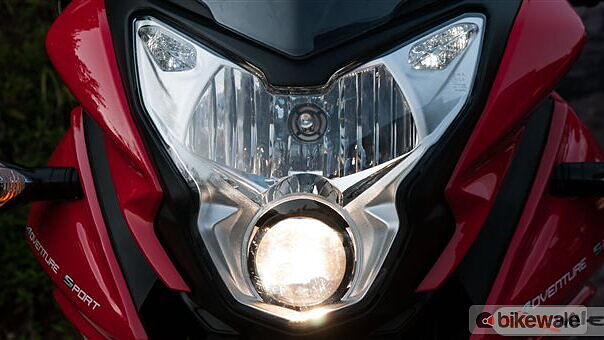













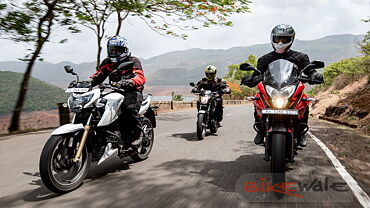















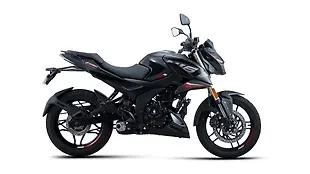
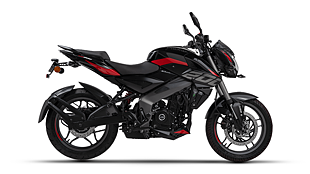
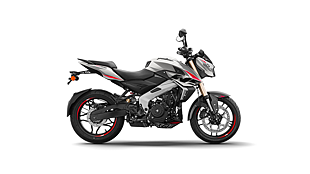





![KTM 390 Adventure X [2025] KTM 390 Adventure X [2025]](https://imgd.aeplcdn.com/272x153/n/cw/ec/190885/390-adventure-x-2025-right-side-view.jpeg?isig=0&q=80)